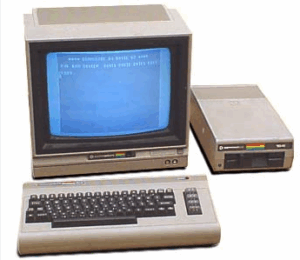My Name is Dean Rehberger, and I am a historian at Michigan State University. For the next year or so, I will be working on a cultural history of Artificial Intelligence and will use this site to post fragments, ideas, and posts about my work (including links to works on Substack).
While I do enjoy working with Artificial Intelligence both as a tool and as a field, my connection with the notion of being an artificial historian goes back a long way. I was trained in American Studies/Cultural Studies with an emphasis on theory and methods, so I have always inhabited a liminal space between English and History. This was easier to negotiate at Michigan State University when we had an American Studies Program — one of the top in the country with a special focus on Popular Culture.
“Established in 1967, the American Studies Program at Michigan State University offers students the opportunity to examine American culture in all its diversity from an interdisciplinary perspective. While the disciplines of history, literature, material culture, and museum studies have traditional appeal, we encourage our students to combine disciplines in non-traditional ways by drawing upon the resources of the entire university. . . . The MSU libraries contain more than four million volumes as well as the Russel B. Nye Popular Culture Collection and the National Voice Library.” (Wayback Machine)
The program ended in 2013 due to budget cuts. While it lasted, it was a perfect home for me, as I pursued museum studies, popular culture studies, and material culture studies with a focus on gender and race in the late nineteenth and early twentieth centuries in the U.S. (a fascinating blend of interdisciplinary studies). History at MSU is a great home, too, and graduate students can still do an emphasis in American Studies. Yet I miss the halcyon days of cultural studies.

In addition, my focus has always been on technologies (their use and histories). At the University of Utah, I wrote my dissertation on a Commodore 64. I had a small color TV as the screen and a cassette tape drive. This would be replaced by a PC, an Epson Equity, in the late 1980s, and I would bring this with me to MSU in 1991.

When the internet took off in the mid 1990s, I set up a server on my desktop, StarNine Web Star, for my students to use. And then to cut to the chase (you can find the longer story at my personal web site https://rehberger.org.), I joined Matrix, a digital humanites center at Michigan State University, in the late 1990s as an Associate Director and later became Director, a position I held until August 2025.
This is all to say, I inhabited another liminal space in which unlike many scholars in the humanities, I did not focus on traditional publication but the building of lots of large collaborative digital projects that took me around the world, had me working with museums and archives, as well as partners from southern and western Africa, much of Europe, and all over the United States.
As I return to a more traditional position and research space, I thought it would be best to turn toward AI. The rhetoric around AI reminds me a lot of the early rhetoric around the internet (“dangerous,” “snake oil,” “unreliable” …), and more importantly, AI will change how we do and teach history, significantly (as did the internet, but even more so).
So stay tuned as I work through the clutter and noise of AI. I will, as much as possible, try to post helpful information, but I am also not concerned about being overwhelmed by users (“If you build it, they will come” was the first mythical pillar of digital work that fell with the rise of the internet). You can find out more about me and past projects at my regular website, rehberger.org.